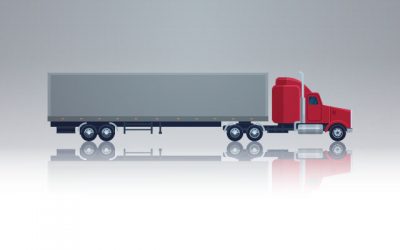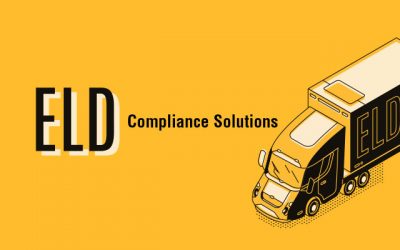What is canada eld vs us
ELD Rule: Canada vs US
Electronic Logging Devices (ELD) has revolutionized the fleet industry of both – the United States and Canada. In this article, we will compare the differences between the rules regulated by the respective authorities of the two countries.
We are going to look at ELD rule of both countries to understand how different they are from each other and what are the similarities that they share.
The United States ELD Rule:
In 2012, the Congress enacted the “Moving Ahead for Progress in 21st Century” bill or commonly referred to as MAP-21. The ELD final rule is a part of MAP-21, which went into effect in 2017. The rule was passed in a bid to ensure the safety of drivers by creating a safe environment and making it easier to track and manage their duty records.
It rules the fleet owners to equip their vehicles with ELD in a bid to reduce the paperwork of drivers to log Hours of Services (HOS) and reduce road accidents.
Federal Motor Carrier Safety Administration (FMCSA) had set a deadline of December 16, 2019, for fleet owners to comply with the rules.
Facts to learn about the US ELD rule:
- ELD regulations rule the drivers to use the device to log their Hours of Services (HOS) as per the legal limit
- Cut down on paperwork and improve efficiency
- Reduce driver fatigue, which leads to road accidents
- Aims to save billions of dollars by reducing paperwork
- Fleet owners can track the location of the vehicle and drivers
Canada ELD Rule:
The Canadian Council of Motor Transport Administrators (CCMTA) released the final rule outlining the Canadian ELD requirements on June 13, 2019. The fleet industry is expected to adhere to the deadline of June 12, 2021.
Facts to learn about the Canada ELD rule:
- Standard process to prevent errors, logbook tampering and harassment of drivers
- ELD must comply with the regulations and to be certified by a third party
- Doesn’t allow use of electronic recording device beyond the compliance time of June 12, 2021. No Grandfather Clause unlike the US ELD rule.
However, there are still some differences and exemptions between the ELD rule of the two countries. Let’s have a look at them.
| Differences | Exemptions | ||
| USA | Canada | USA | Canada |
| Requires sending a detailed report of eight-day log data to enforcement | Required to share log data of 14-day | Drivers who use paper logs for 8 days during a 30-day period | Those operating under a permit |
| Manufacturers are supposed to get the location of events like yard moves, personal conveyance, duty status, unassigned vehicle moves etc | Requires the government to supply ELD vendors with just the final file that they can use to get direction and distance. | Driveaway-towaway drivers | Operated by a carrier, which qualifies to the exemption under the Motor Vehicle Transport Act |
| Doesn’t have any time or distance restrictions when it comes to personal conveyance | 75Km allowed for personal conveyance | Drivers of vehicles manufactured before 2000 | Manufactured before the model year 2000 (referring to the engine mostly) |
| No need for third party certification | Requires third party certification. | ||
Difference between the US ELD rule and Canada ELD rule:
Data Transfer to Enforcement:
The US ELD mandate requires the vehicles to send a detailed report of eight-day log data to enforcement whereas as per Canadian ELD mandate, carriers are only required to share log data of 14-day.
Location Data Sources:
As per US ELD mandate, manufacturers are supposed to get the location of events like yard moves, personal conveyance, duty status, unassigned vehicle moves etc. But the Canadian ELD mandate requires the government to supply ELD vendors with just the final file that they can use to get direction and distance.
Personal Conveyance:
The US ELD mandate doesn’t have any time or distance restrictions when it comes to personal conveyance. However, the Canadian ELD mandate would require the ELD supplier to measure 75km within 24 hours. If it crosses the limit, the system will automatically change the status from personal conveyance to driving.
Third Party Certification:
The US ELD mandate doesn’t make it mandatory for the ELD suppliers to get third party certification whereas the Canada ELD mandate requires third party certification.
Similarities between the US ELD rule and Canada ELD rule:
Data Collection:
ELDs will collect the data and generate a log of Hours of Services (HOS) automatically along with other information about the vehicle, location, driving pattern etc.
Notifications:
ELDs are required to generate automatic alerts in case of vehicle malfunction or unassigned driving time.
Information Sharing:
The reports generated are in a standardized format for clarity during inspections by law enforcement officers.
Exemptions made by the US ELD rule:
As per the FMCSA, three groups are exempted from using ELDs.
- Drivers who use paper logs for 8 days during a 30-day period
- Driveaway-towaway drivers
- Drivers of vehicles manufactured before 2000
The FMCSA has also extended the deadline for certain companies:
- The United Parcel Service, October 2022
- Motion Picture Association of America, January 2023
- Truck Renting and Leasing Association, October 2022
Exemptions made by the Canada ELD rule:
- Those operating under a permit
- Operated by a carrier, which qualifies to the exemption under the Motor Vehicle Transport Act
- Subject to a rental agreement of no longer than 30 days
- Manufactured before the model year 2000 (referring to the engine mostly)
According to the Federal Motor Carrier Safety Administration’s (FMCSA) Regulatory Impact Analysis for ELDs, the device aims to cut down major administrative costs.
Savings estimate from paperwork annually (FMCSA estimate):
- HOS filling: $487 per year approximately
- HOS submission: $56 per year approximately
- Clerk filing HOS: $120 per year approximately
- No logbooks: $42 per year approximately
According to the estimate, a total of $705 is saved annually as paperwork savings. This is just an estimate. ELDs are expected to reduce the time required to maintain log by 4.5 minutes per HOS or around 20 hours annually as per FMCSA.
Also, it saves around 2 hours every year, the time required for drivers to forward the HOS to carriers.
ELD rule makes it mandatory for fleet owners to equip their vehicles with the device to record the duty hours and help in eliminating the risk of road accidents by cutting down on driver’s fatigue.
The FMCSA strongly believes that the ELD mandate will avoid thousands of road accidents annually and end up saving billions of dollars as paperwork expenses.
FMCSA has provided with a guideline for fleet owners and truckers in case of any ELD malfunction.
- Note down the malfunction of the ELD and send a written notice to the motor carrier within 24 hours
- The drivers need to reconstruct the duty log for the last 24 hours and previous 7 consecutive days to ensure there is no data loss due to the malfunction
- Maintain the manual record of duty status until the ELD is in working condition
- In case, any driver is inspected for Hours of Services during ELD malfunction then the driver can provide the official safety official with driver’s record of duty status
- In case of any inconsistency in data, the driver must follow guidelines of motor carriers or ELD’s vendor recommendations.
If you are still looking for ELD device, write to us or call us. TXT ELD offers a 24/7 Multi-Language technical support team that is always available to help you. You can call us at our toll-free number 1-833-TXT-ELOG (898-3564) or drop a mail at sales@txtesolutions.com or support@txtesolutions.com



